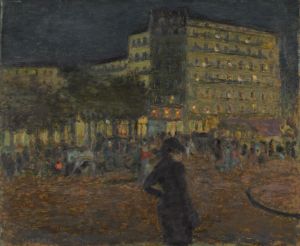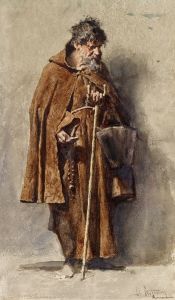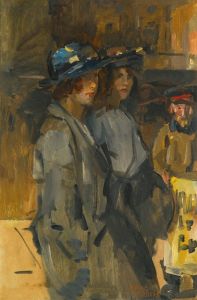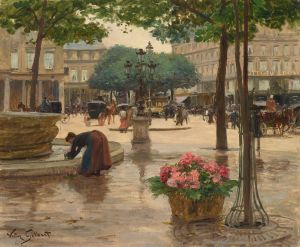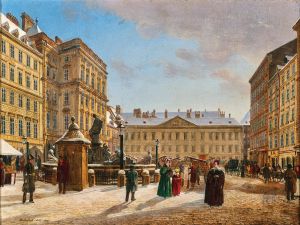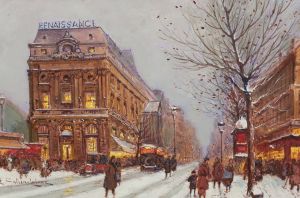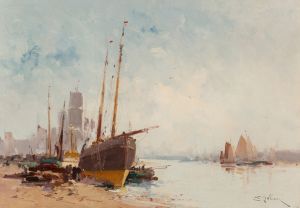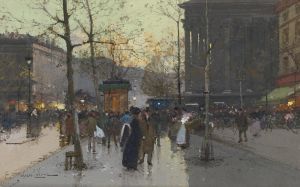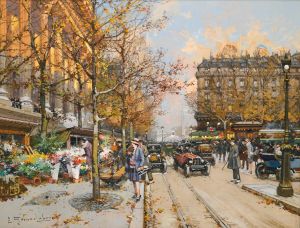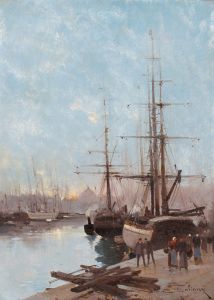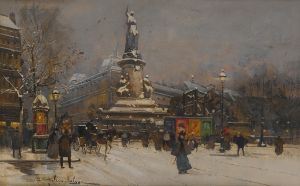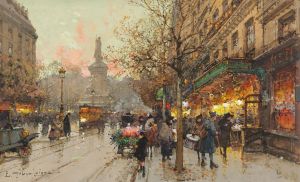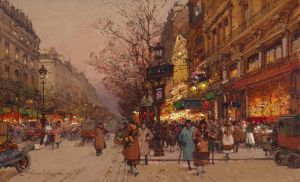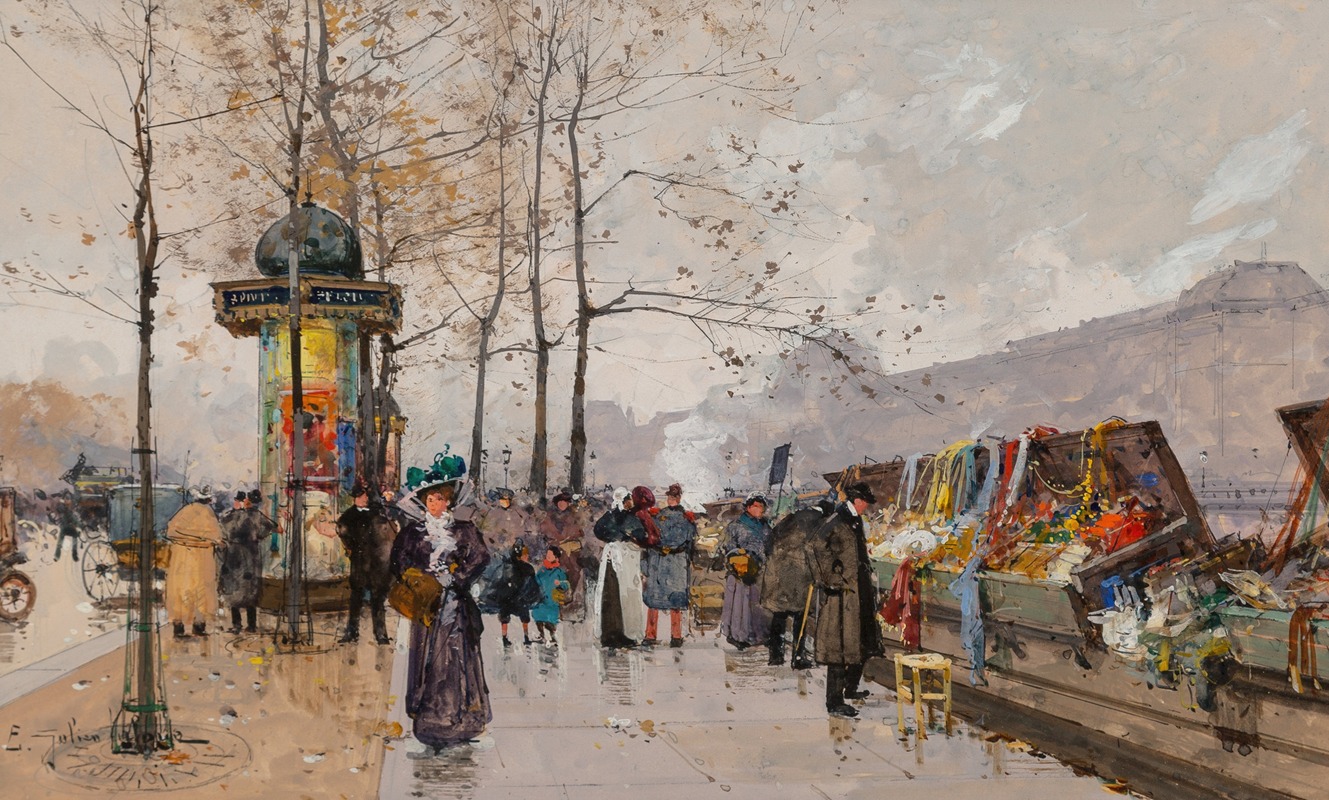
Quai Voltaire
A hand-painted replica of Eugène Galien-Laloue’s masterpiece Quai Voltaire, meticulously crafted by professional artists to capture the true essence of the original. Each piece is created with museum-quality canvas and rare mineral pigments, carefully painted by experienced artists with delicate brushstrokes and rich, layered colors to perfectly recreate the texture of the original artwork. Unlike machine-printed reproductions, this hand-painted version brings the painting to life, infused with the artist’s emotions and skill in every stroke. Whether for personal collection or home decoration, it instantly elevates the artistic atmosphere of any space.
Eugène Galien-Laloue (1854-1941) was a prolific French artist known for his detailed and atmospheric depictions of Parisian street scenes. One of his notable works is "Quai Voltaire," which captures the essence of Paris in the late 19th and early 20th centuries.
"Quai Voltaire" is a painting that showcases the Quai Voltaire, a famous street along the left bank of the Seine River in Paris. This area is historically significant and known for its picturesque views and vibrant cultural life. The Quai Voltaire is named after the French Enlightenment writer Voltaire, who lived there during the last years of his life.
Galien-Laloue's painting is characterized by its meticulous attention to detail and the use of light to create a sense of atmosphere. The artist often employed a palette of muted colors, which lends a nostalgic and serene quality to his works. In "Quai Voltaire," Galien-Laloue captures the hustle and bustle of daily life along the Seine, with pedestrians, horse-drawn carriages, and the iconic Parisian architecture serving as the backdrop.
The painting reflects Galien-Laloue's skill in rendering urban landscapes and his ability to convey the charm and vibrancy of Paris. His works are often celebrated for their historical accuracy and the way they document the changing face of the city during a period of significant transformation.
Eugène Galien-Laloue was born in Paris and began his artistic career at a young age. He studied under his father, Charles Laloue, and later under the artist Léon Germain Pelouse. Galien-Laloue exhibited his works at the Salon des Artistes Français and gained recognition for his detailed and evocative street scenes. He was known to use various pseudonyms, including "L. Dupuy" and "Juliany," to sign his works, which was a common practice among artists of the time to avoid contractual restrictions with galleries.
Throughout his career, Galien-Laloue produced a vast number of paintings, many of which depict the streets, markets, and landmarks of Paris. His works are highly sought after by collectors and are held in numerous private and public collections worldwide.
"Quai Voltaire" is a testament to Galien-Laloue's mastery of the urban landscape genre and his ability to capture the spirit of Paris. The painting not only serves as a beautiful piece of art but also as a historical document that offers a glimpse into the daily life and architecture of Paris during the late 19th and early 20th centuries.
Galien-Laloue's contribution to the art world is significant, and his works continue to be appreciated for their artistic merit and historical value. "Quai Voltaire" remains one of his celebrated pieces, exemplifying his talent for creating evocative and detailed representations of Parisian life.





